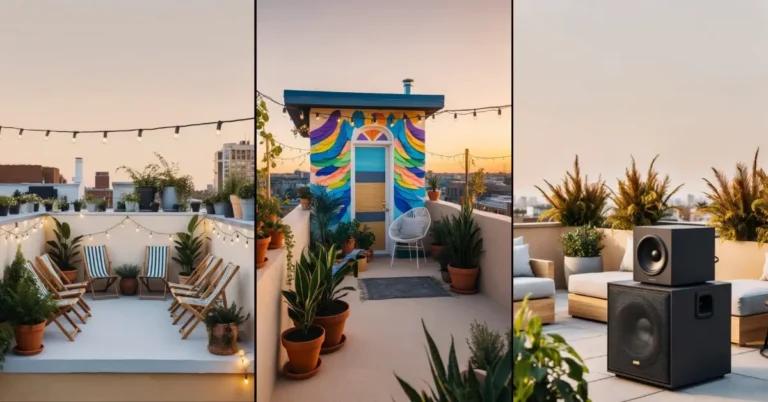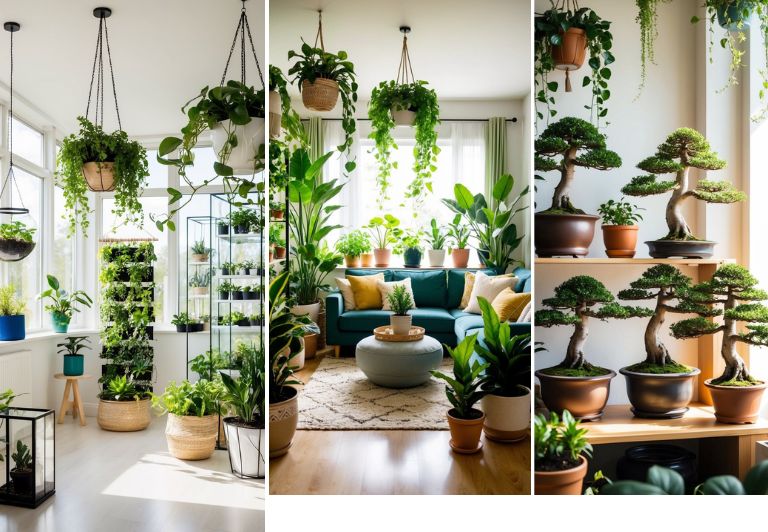10 Cottage Garden Design Ideas: For Timeless And Elegant Outdoor Spaces
Cottage gardens have this timeless, inviting vibe that just pulls you in. They mix natural beauty with comfort, making your outdoor space both attractive and genuinely welcoming.
If you’re aiming for a cozy and visually pleasing garden, it helps to know a few design tricks. The right approach can turn your space into a peaceful retreat that feels simple and full of charm.
1) Use informal, winding pathways made of brick, gravel, or flagstone for charm.
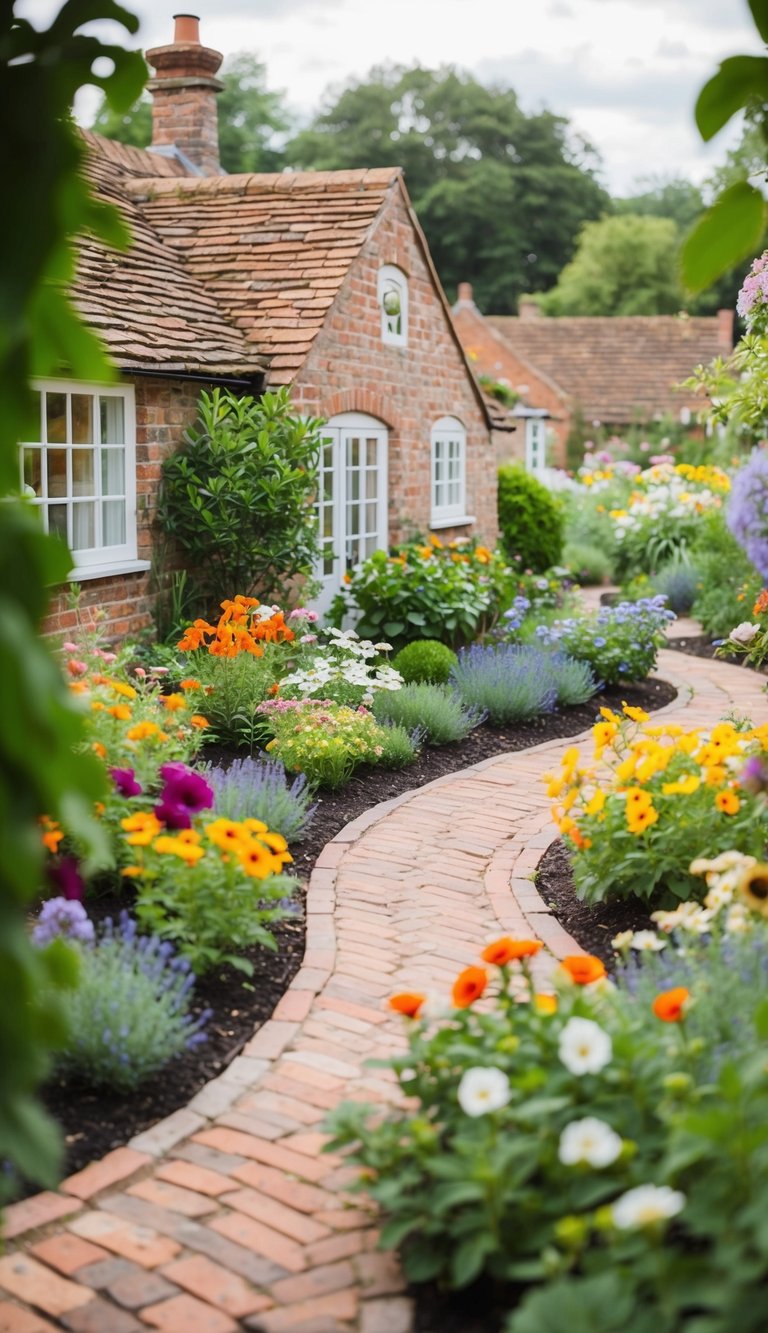
Try creating winding paths to give your garden a relaxed, natural feel. Brick, gravel, and flagstone are all great materials for these informal paths.
Curved walkways invite you to explore and make the space feel more welcoming. Using materials that match your garden’s style just adds to the charm.
2) Plant tall flowers like foxgloves at the back of beds.
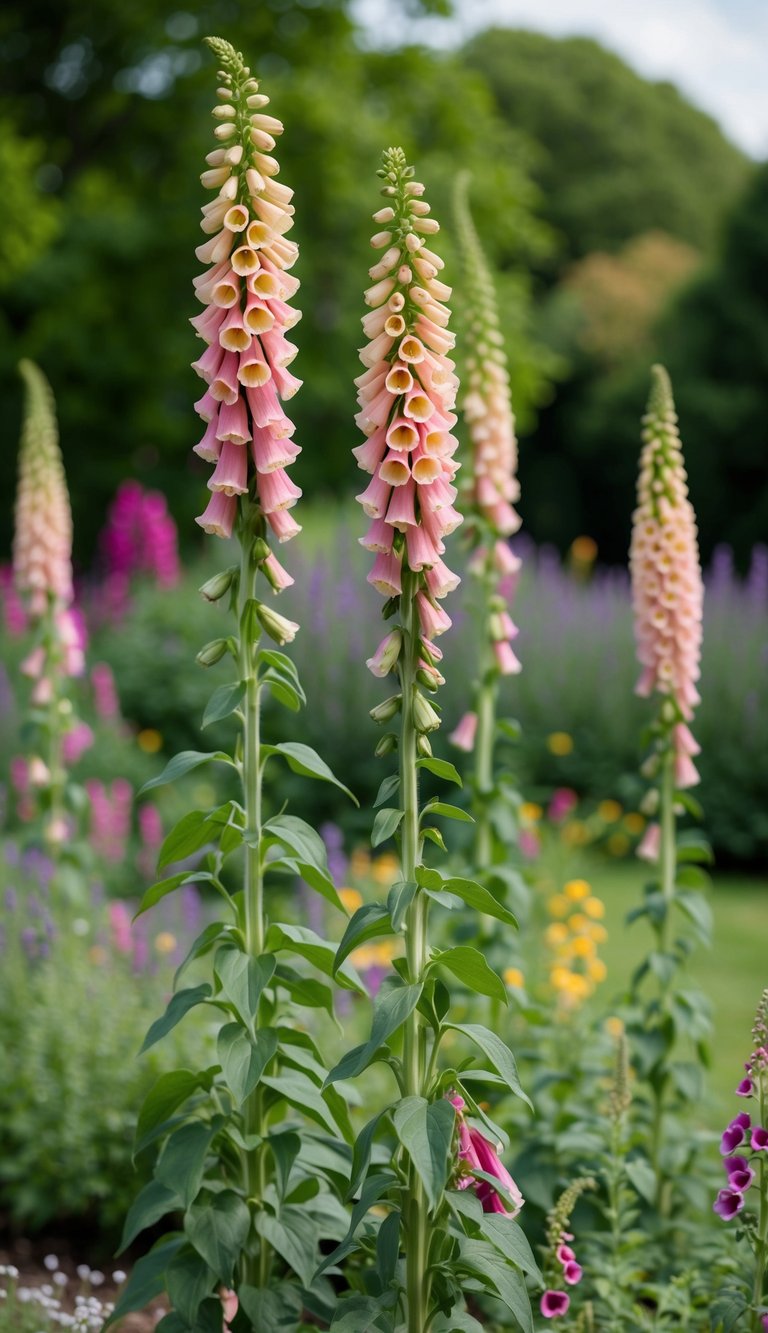
Put tall flowers, think foxgloves, at the back of your beds. They add a vertical line and some structure.
These tall spikes make a colorful backdrop for smaller plants in front. Foxgloves especially can brighten up any spot with their bold color.
3) Incorporate fragrant plants such as lavender or sweet peas.
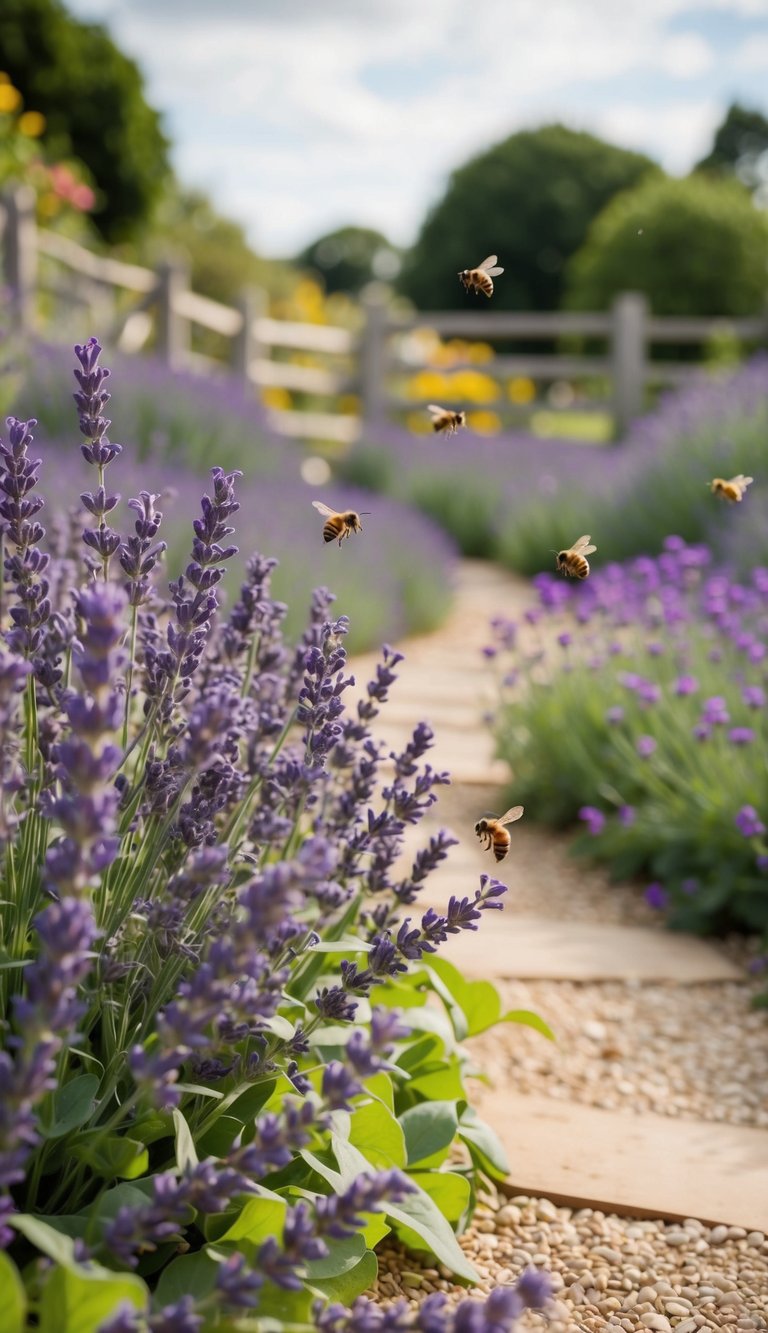
Fragrant plants really boost your garden’s appeal. Lavender not only smells amazing but also attracts bees and butterflies.
Sweet peas bring both scent and color, making any garden space feel special. Both are perfect for that classic cottage garden vibe.
4) Group plants in clumps for visual cohesion
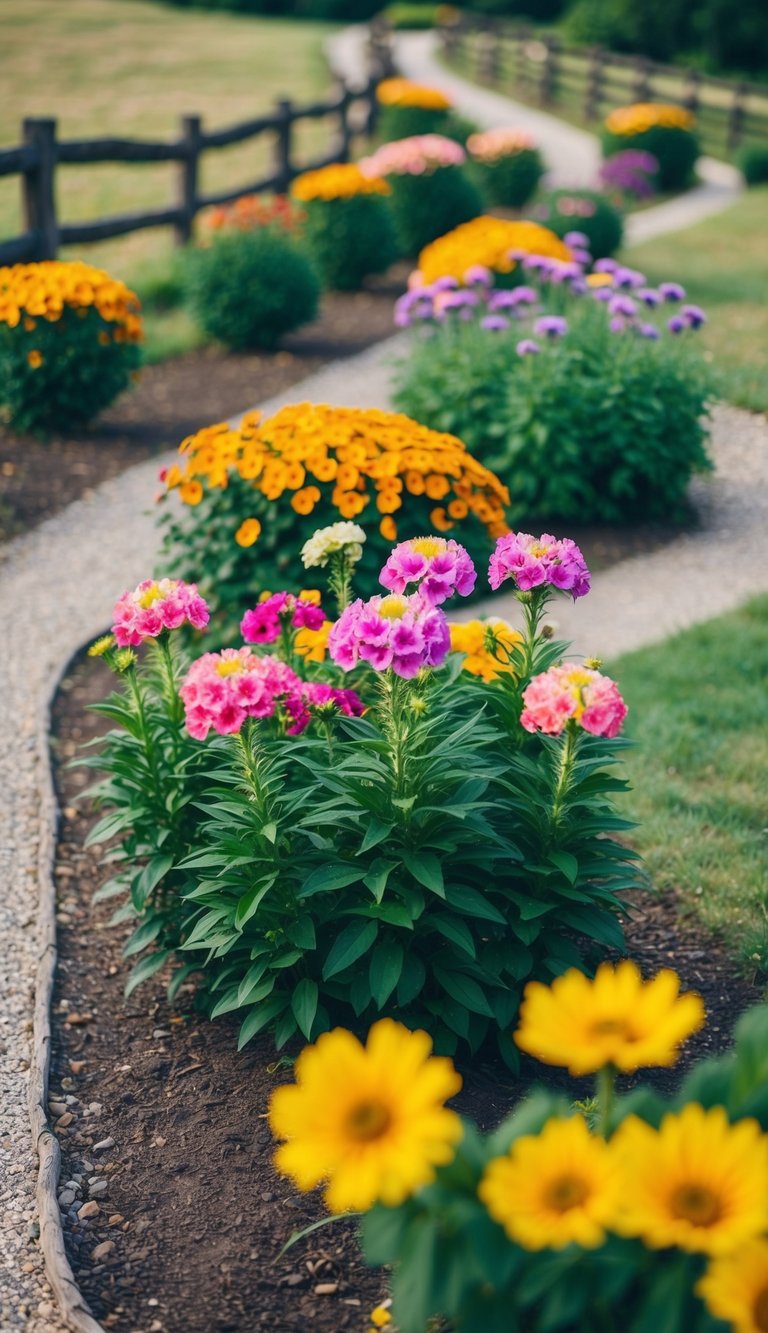
Planting flowers and shrubs in groups, rather than one by one, makes the garden look fuller and more natural. Clumps help everything feel connected.
If you plant three or more of the same variety together, colors and shapes really pop. It’s a classic cottage garden move.
For inspiration, check out this guide on creating an English cottage garden.
5) Add classic cottage roses as focal points
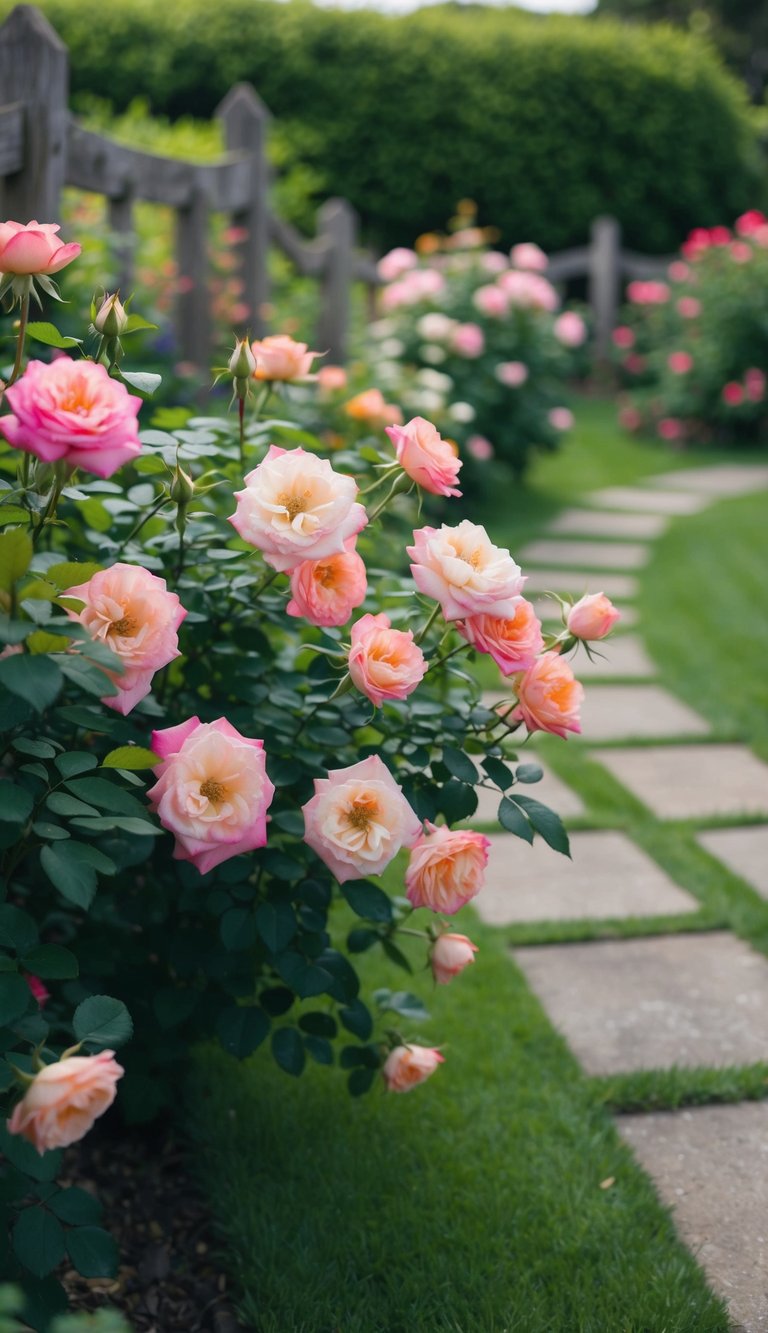
Classic cottage roses make great focal points. They have a timeless look and blend beautifully with other plants.
Plant them where they’ll catch the eye, like along walkways or near the entrance. Their structure gives your garden shape and interest.
Mixing roses with herbs and wildflowers keeps things informal and charming.
Want more? See Create A Cottage Style Garden With English Roses.
6) Include wildflower-style plants like aquilegia and penstemon.
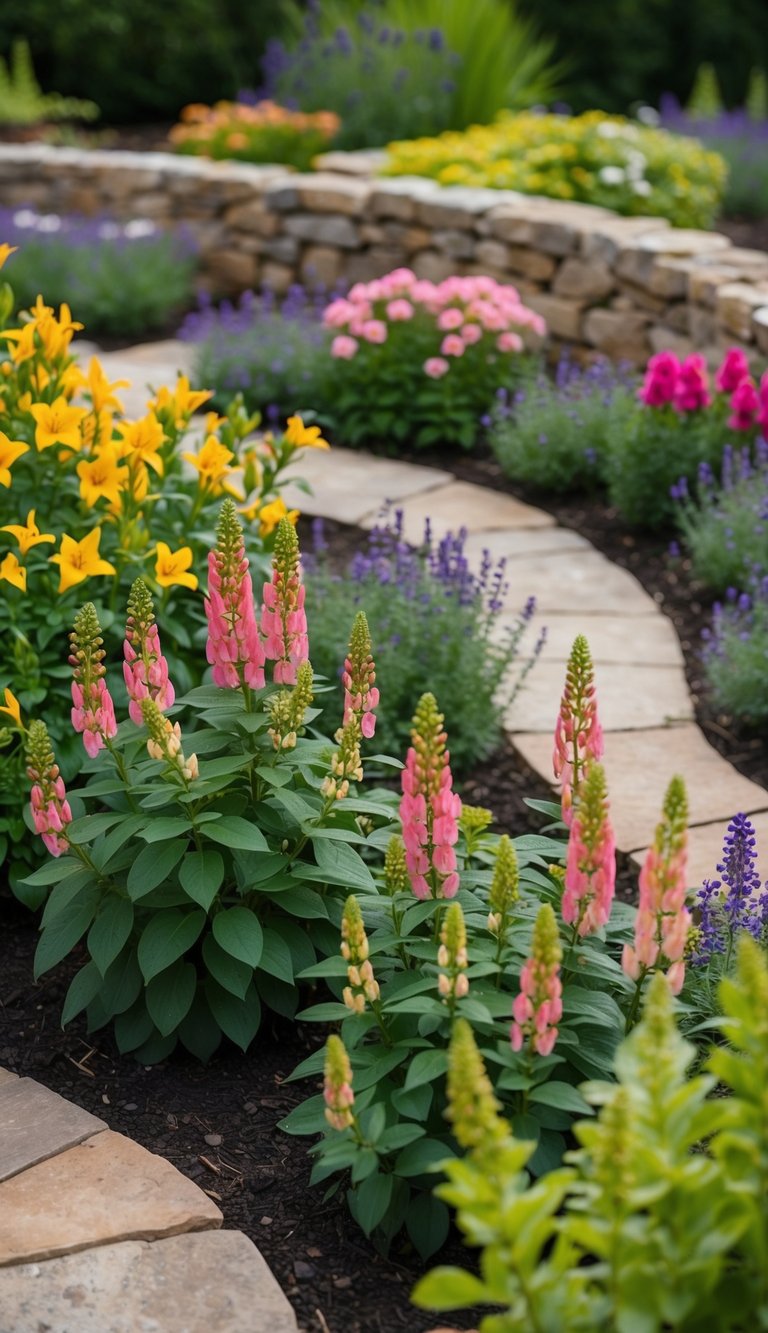
Wildflower-style plants, like aquilegia and penstemon, bring a delicate, natural beauty. Their shapes and colors are unique.
These are great for attracting pollinators and thrive in informal planting schemes. They just fit right in with the relaxed cottage garden look.
7) Use a mix of ornamental and edible plants densely.

Pack in both ornamental flowers and edible plants. This dense planting style feels lush and natural.
Herbs like rosemary or parsley look great with flowers such as violets or nasturtiums. It’s a tradition that makes your garden beautiful and useful.
If you want more ideas, check out this guide.
8) Add ground cover plants to fill spaces and reduce weeds.
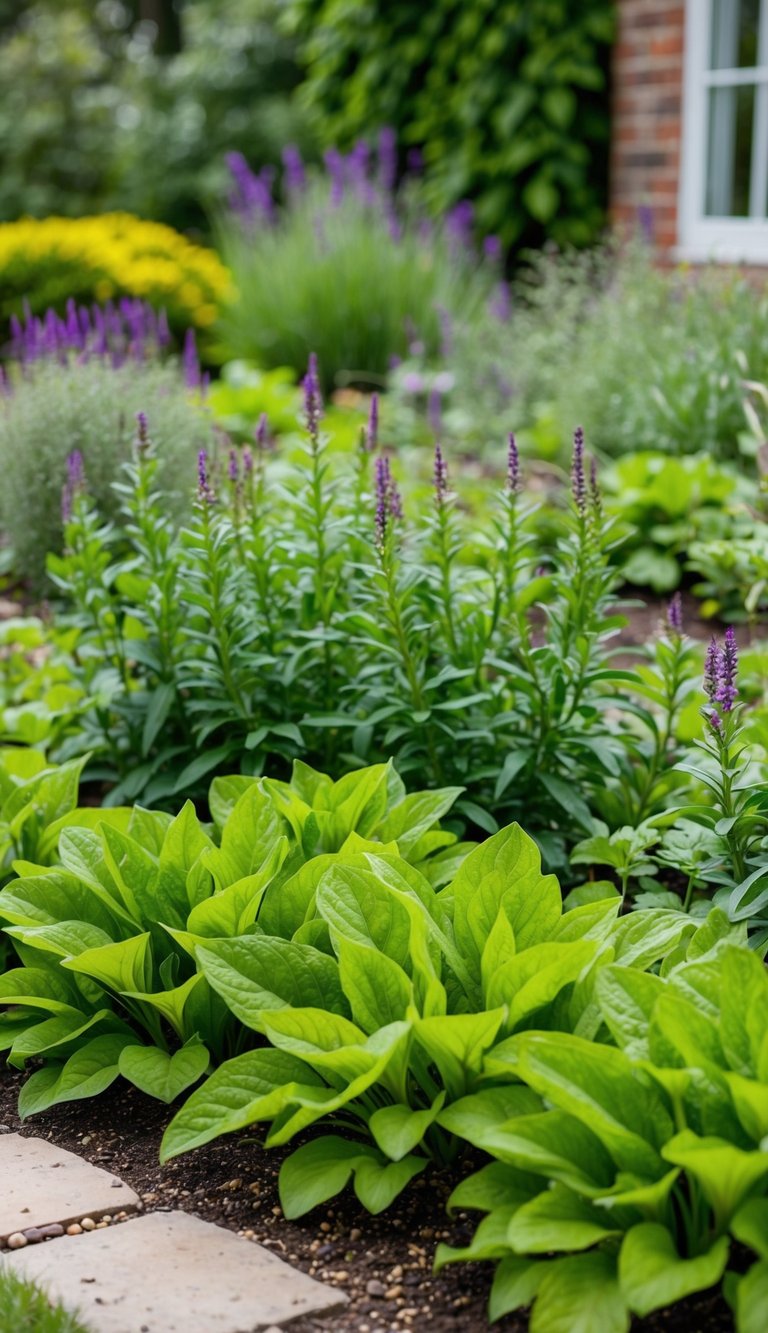
Ground cover plants fill in empty spots and help stop weeds from taking hold. They keep the soil moist, too.
Pick low-maintenance types to keep things simple. If you’re curious, check out these great ground cover plants.
9) Create a secluded seating area for relaxation
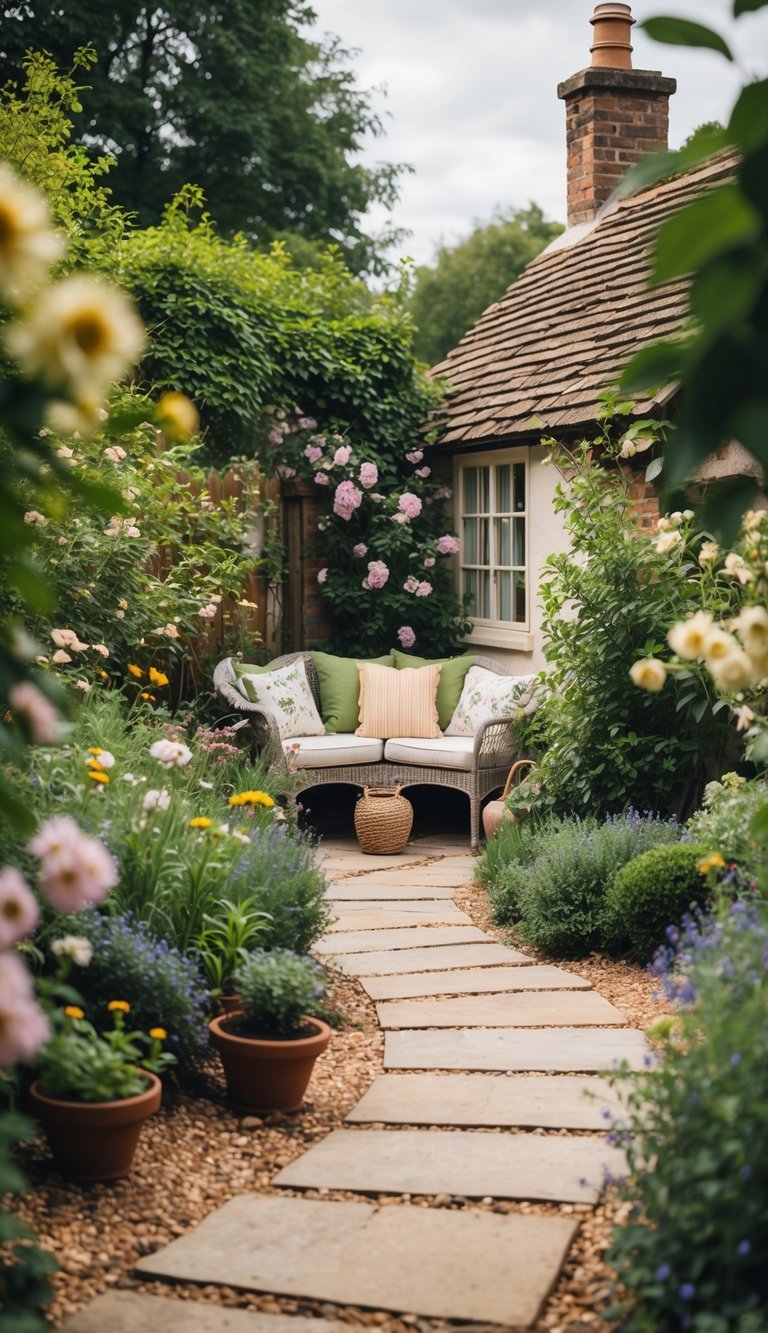
Design a quiet spot just for relaxing. A bench or small table tucked under a tree or beside tall plants can feel like a secret hideaway.
Use shrubs or trellises for privacy and shade. A secluded seating area lets you soak in the garden’s beauty. For more, see secluded garden seating here.
10) Utilize natural materials like wood chips for mulch.

Wood chips work well as mulch, keeping soil moist and stopping weeds. They slowly improve soil fertility, too.
Plus, they look right at home in a cottage garden. For more tips, check out using wood chips in the garden.
Essential Principles of Cottage Garden Design
A cottage garden should feel relaxed and natural, but not totally wild. You’ve got to manage plant placement and color, or things can get out of hand fast.
Clear choices about structure and color help your space stay inviting and last through the seasons.
Balancing Structure and Informality
You want cozy, but not chaotic. Curving paths or borders give soft structure without feeling stiff.
Beds should be dense, but not just a tangle—arrange thoughtfully. Features like a picket fence or stone walkways add a touch of formality, but let plants spill over and do their thing.
Mix flowering perennials with shrubs for height and texture. Keep paths visible so you don’t lose them to overgrowth.
A little regular pruning helps keep the balance. You don’t want things getting too wild, but you also don’t want to fuss over every leaf.
Color Palettes for Timeless Appeal
Pick color schemes that feel classic—soft pinks, mauves, and whites are always a safe bet. Or go for a mix of yellows and blues if you want a bit of contrast.
Don’t go overboard with too many colors. Repeating a few shades pulls everything together and keeps things from looking messy.
Think about what blooms when. Use plants that flower at different times so you’ve got color all year. Lavender, foxglove, and roses are reliable picks for both color and scent.
A focused palette keeps the look elegant and coordinated, even as the seasons change.
For more, see cottage garden ideas and elements, including how perennials and climbers fit in.
Selecting Plants for a Cottage Garden
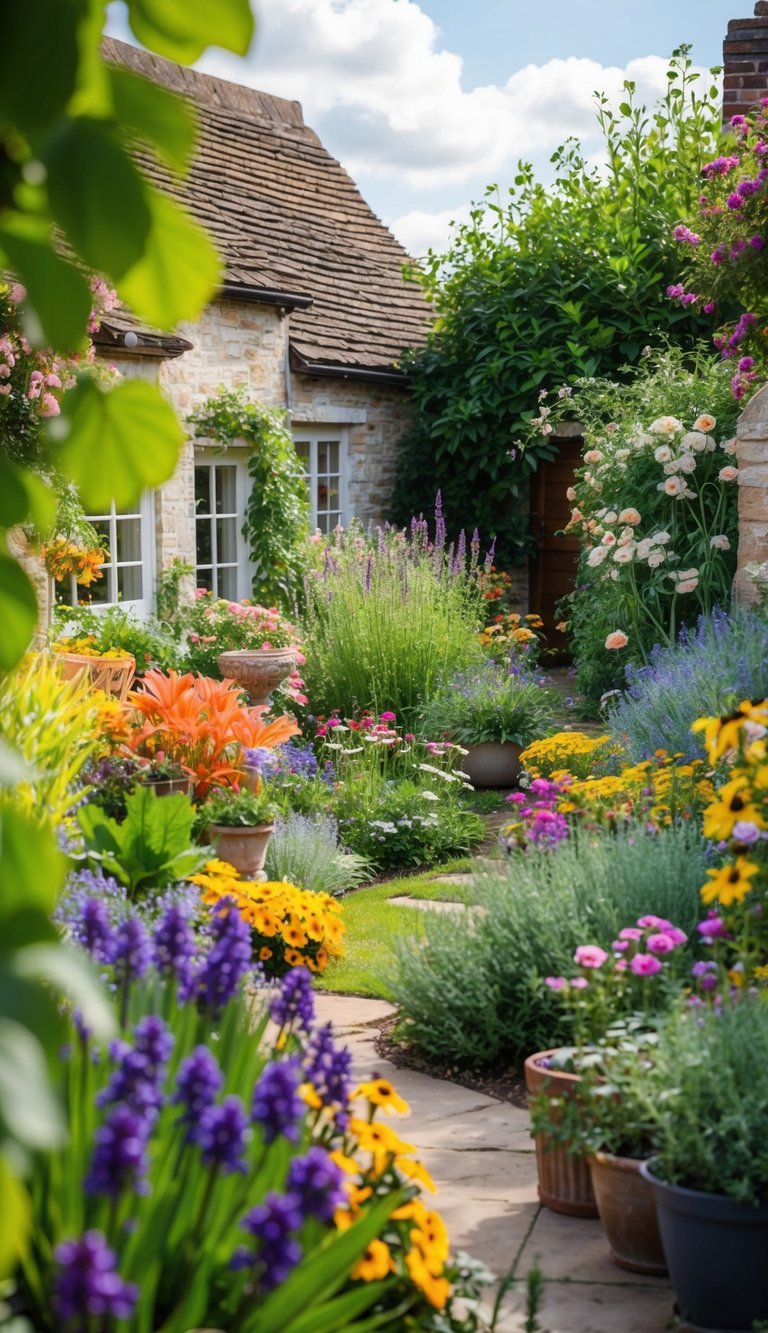
Picking the right plants really makes the cottage garden feel natural and charming. A good mix of colorful flowers and different foliage adds depth and keeps things interesting.
Perennial and Annual Flower Choices
Perennials are the backbone here—they come back every year, so you don’t have to start from scratch. Daisies, foxgloves, delphiniums, and bellflowers are all solid choices for lasting blooms.
Annuals like nasturtium or calendula fill in the gaps and bring fresh color. Plant them in groups or drifts for a less formal, more natural look.
Herbs like rosemary, sage, and chives fit right in, too. They add texture, color, and you can use them in the kitchen. Mix tall and short plants to create layers and make your garden look lively and full.
Foliage for Texture and Interest
Varied foliage keeps a garden interesting, even when nothing’s in bloom. Try mixing plants with all sorts of leaf shapes, sizes, and colors.
Take lamb’s ear, for instance—those soft, gray-green leaves pop against the bold, darker hostas. Climbing plants like clematis or climbing roses? They’ll toss in some vertical texture.
Shrubs add structure. Mixing evergreens and deciduous types means you’ll get color no matter the season.
Not everything has to be about the flowers. Balancing foliage and blooms gives your garden that cozy, lively vibe.
For more about classic cottage garden plants, you can check out this list of favorite cottage garden plants.



